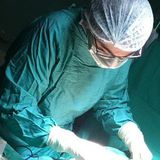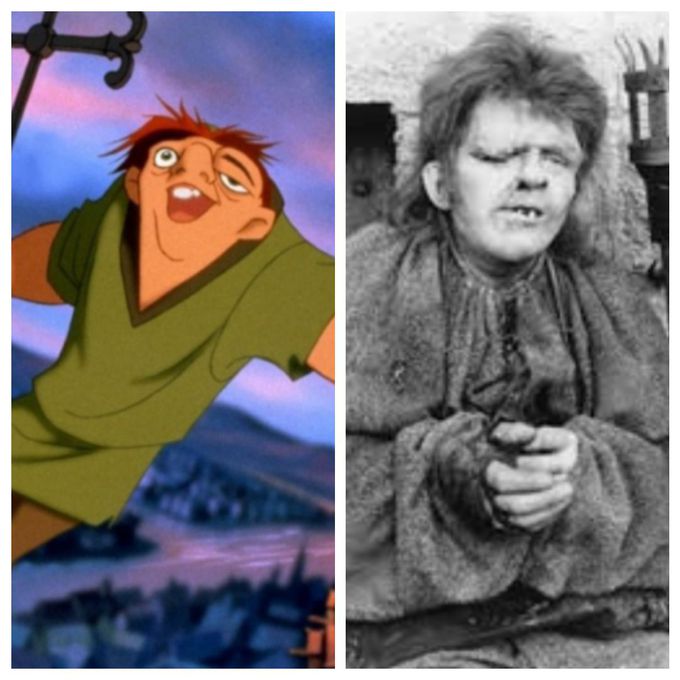


Quasimodo the hunchback of Notre dame
All of us have watched the hunchback of Notre Dame, however after finishing my medical degree i got so curious to know what Quasimodo was suffering from, and after doing several research it was found that he was suffering from spinal cord deformities know as kyphosis. Kyphosis is a spinal disorder in which an excessive outward curve of the spine results in an abnormal rounding of the upper back. However, that is not it, Quasimodo was suffering as well from what is known the Proteus syndrome which is is a rare condition characterized by overgrowth of the bones, skin, and other tissues. Organs and tissues affected by the disease grow out of proportion to the rest of the body. The overgrowth is usually asymmetric, which means it affects the right and left sides of the body differently. Quasimodo had as well Mucopolysaccharidoses which are hereditary, pro-gressive diseases caused by mutations of genes coding for lysosomal enzymes needed to degrade glycosaminoglycans. The major glycosaminogly-cans are chondroitin-4-sulfate, chondroitin-6-sul-fate, heparin sulfate, dermatan sulfate, keratin sulfate, and hyaluronan. These substances are synthesized and linked to proteins to form pro- teoglycans, major constituents of the ground sub- stance of connective tissue, of nuclear and cell membranes. The hyaluronan is an exception in this mechanism. Failure of degradation because of absent or grossly reduced activity of mutated lysosomal en- zymes results in the intralysosomal accumulation of glycosaminoglycan fragments. The characteris- tic pattern of clinical, radiologic, and biochemical abnormalities are due to cell dysfunction caused by the accumulation of distended lysosomes in the cells. Mucopolysaccharidosis I (MPS-I), or Hurler syndrome, is caused by mutations of the IDUA gene on chromosome 4p16.3 encoding α-L- iduronidase. Deficiency of α-L-iduronidase re- sults in a wide range of clinical involvement, which are ends of a broad clinical spectrum. Hurler disease is a severe, progressive disorder with multiple organ and tissue involvement. Its transmission is autosomal recessive. Diagnosis is usually made between 6 and 24 months with ev- idence of hepatosplenomegaly, coarse facial fea- tures, corneal clouding, large tongue, prominent forehead, joint stiffness, short stature, and skele- tal dysplasia. Facial deformities are usually pathognomonic: frontal bossing, promi- nent eyes with hypertelorism and depressed na- sal bridge, gapped teeth, gingival hypertrophy and (as it has already been described) a thickened tongue. Facial features resemble the gargoyles, the carved or formed grotesque with a spout de- signed to convey water from a roof and away from the side of a building, thereby preventing rainwater from running down masonry walls and eroding the mortar between. Architects often used multiple gargoyles on a building to divide the flow of rainwater off the roof to minimize the potential damage from a rainstorm, like Eugène Viollet-le Duc in Notre-Dame. Hunter used the term “gargoylism” in order to describe his own cases,but nowadays the term is used for Hurler’s disease. https://www.google.bg/url?sa=t&source=web&rct=j&url=https://www.eexot-journal.com/index.php/aoet/article/download/53/42/&ved=2ahUKEwjjjJez2vHwAhXXURUIHZ9sC_sQFnoECC4QAQ&usg=AOvVaw1jlWECQ0YZxvJX2yd80Bnv

